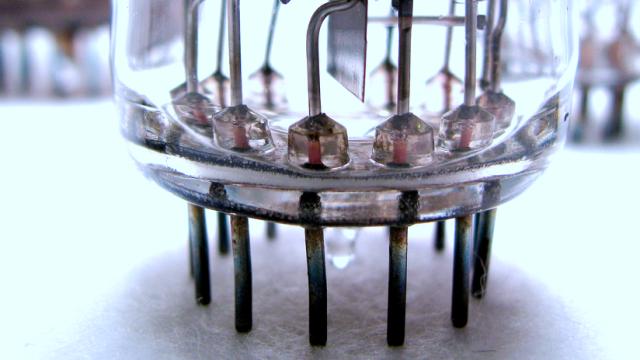Moore’s Law is under threat. In the battle between chip designers and the laws of physics, it’s beginning to look like it won’t be long before it’s impossible to double the number of transistors on integrated circuits every two years. But there could be a solution, and it involves — of all things — good old vacuum tubes.
We’re struggling to meet Moore’s Law because we can’t make transistors small enough; there just aren’t the capabilities available to laser-etch them much smaller than they are right now and still have them work properly. In fact, to shrink standard transistors down small enough to keep Moore’s Law alive, we need to control the deposition of atoms in silicon to within 10s of atoms — and that’s close enough to the limits of physics that it seems practically impossible right now.
But a team of NASA researchers think they have a solution — in the form of the very same vacuum tube technology that transistors themselves superseded.
Actually, we’re not talking the kinds of vacuum tubes used in those early computers, but rather vacuum transistors: the same physical idea, just shrunk right down to minuscule dimensions. And at that scale, it turns out, many of the positive characteristics of vacuum tubes remain, without the big downslide of low efficiency (and massive heat generation).
Indeed, a report in IEEE Spectrum reveals that transistors which include a small vacuum can draw electrons through themselves without needing an internal physical connection. Shrink the vacuum space right down, decrease the voltage and it turns out you actually get an incredibly efficient little device. (For a more detailed take on the science, check out this report by Hot Hardware.)
The NASA researchers claims that they have managed to create vacuum transistors that work at the 460GHz, and mitigate some of the effects that make it impossible to make modern transistors much smaller, like quantum tunneling and electromigration. They are, however, still very much in their experimental stages, and they’re yet to work out how to go from making a handful in the lab to millions on an integrated circuit. And that’s no small problem.
Still, everything has to start somewhere, and the researchers reckon these vacuum transistors could in fact be used in everything from communication hardware to microprocessors. Eventually. [IEEE Spectrum via Hot Hardware]
Picture: Kurt Faler
